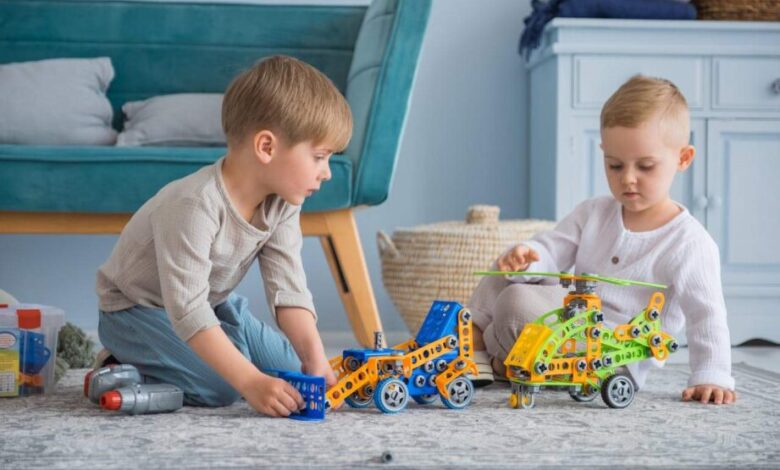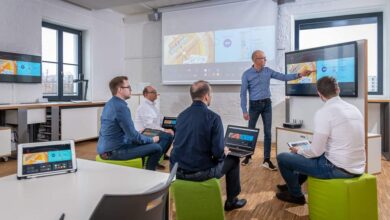Creative Play: Unleashing the Power of Imagination in Early Childhood

The Significance of Creative Play
Creative play is instrumental to children’s overall development beyond simple amusement. It stretches their imagination, providing a canvas for exploring new worlds and scenarios, thus fostering ingenuity and innovation from a young age. Children cultivate many skills by engaging in this form of play, including critical thinking, social interactions, and emotional intelligence. Educational tools tailored for ages 5 to 7 play a crucial role in aligning with developmental milestones, as each tool is crafted to cater to children’s growing cognitive and motor skills during these formative years.
Enhancing Cognitive Abilities through Play
Playtime becomes a fertile ground for enhancing a child’s cognitive abilities by stimulating their natural curiosity and learning. Children must use their critical thinking and decision-making abilities, whether solving puzzles, building with blocks, or playing interactive games. These activities support cognitive development by enhancing spatial awareness, memory retention, and logical reasoning. According to a New York Times article, there’s a significant correlation between creative play and higher academic performance, as such activities bolster focus and enhance memory capabilities. Encouraging children to explore these playful activities helps them connect abstract concepts with tangible experiences, enriching their learning journey.
Developing Social Skills and Empathy
Creative play is a fundamental tool in fostering social skills and empathy among children. Through interactive play, young learners acquire the art of communication, role-playing, turn-taking, and understanding different perspectives. Engaging in group activities and cooperative games lays the groundwork for teamwork, emphasizing the values of sharing and collaboration. Social play enables children to navigate the complexities of human interactions, accommodating diverse personalities and viewpoints. These vital interpersonal skills form the backbone of meaningful relationships that they will forge in adulthood, enhancing their ability to connect with others on an emotional and empathetic level.
Fostering Emotional Development
Beyond cognitive and social benefits, creative play significantly impacts a child’s emotional development. It provides a safe space for expressing and understanding emotions, thus cultivating emotional intelligence. Dramatic play, such as role-playing or pretend games, allows children to explore complex emotions in a controlled setting and encourages them to empathize with different characters. This kind of play helps children develop better regulation of their own emotions and understand the feelings of others. With this practice, children can become emotionally balanced and empathetic adults adept at managing their emotional responses in various situations.
Incorporating Hands-On Learning
Integrating hands-on learning activities transforms educational experiences into tangible and memorable interactions. Activities such as crafting, building, and using educational toys allow children to construct their understanding actively. These experiences engage multiple senses, promoting deeper comprehension and retention of concepts. A Scientific American article underscores the efficacy of toys as educational tools, stating that they provide meaningful contexts that boost engagement and inquisitiveness. By lowering the barriers between theory and practice, hands-on learning helps children link ideas with real-world applications, reinforcing and broadening their educational experiences.
The Role of Educational Tools in Creative Play
Educational tools and toys form the bridge between play and learning, ensuring children develop a broad set of skills while having fun. These carefully crafted instruments offer structure and flexibility in play while meeting young learners’ changing cognitive, physical, and emotional demands. Their diverse range includes everything from puzzles and science kits to language games and art supplies, each targeting different areas of development. By offering a balanced spectrum of play opportunities, these tools enable children to explore varied interests and hone distinct skills, paving the way for a well-rounded personal growth trajectory.
Creating a Balanced Play Environment
Curating a balanced play environment involves striking an optimal mix of structured and unstructured play opportunities tailored to children’s developmental needs. Structured play encompasses activities guided by adults, featuring specific learning objectives such as cooperation, turn-taking, or motor skills development. For instance, organized games like freeze tag or scavenger hunts promote physical activity and encourage children to follow the rules and work collaboratively with peers, building foundational social and cognitive skills through planned interactions.
In contrast, unstructured play—often seen in open-ended scenarios like free play or creative explorations—offers children the freedom to choose their activities. This type of play invites spontaneity, allowing children to tap into their imagination through activities like building forts, playing dress-up, or engaging in pretend play. In these environments, children are empowered to experiment with their ideas, navigate the complexities of social interactions, and pursue their interests at their own pace, fostering creativity and self-expression.
A thoughtfully designed balanced play setting allows children to engage in both types of play and encourages them to oscillate between the two. Children learn to evaluate risks, make decisions, and modify their tactics in response to their experiences in this dynamic setting, fostering critical thinking and problem-solving skills. Ultimately, by providing a blend of structured guidance and the freedom to explore, children develop the confidence to tackle challenges independently, adapt to new circumstances with resilience, and cultivate a lifelong passion for learning and discovery.
Conclusion: Curating a Creative Future
Developing a child through creative play is instrumental in shaping well-rounded, confident, and intellectually curious individuals. Engaging children in diverse and stimulating play experiences lays a robust foundation for future success, encompassing academic achievements and personal growth.
As children immerse themselves in various forms of creative projects, imaginative role-playing, building with blocks, engaging in storytelling, or participating in art projects, they express themselves and acquire essential skills. These skills include problem-solving, critical thinking, collaboration, and effective communication, all of which are vital for navigating the complexities of the modern world.
Furthermore, activities that promote creativity encourage children to think outside the box, enabling them to become innovative thinkers. For instance, engaging in open-ended play allows children to explore their ideas freely, fostering a sense of curiosity and a willingness to experiment. This process is crucial in nurturing empathetic communicators as children learn to understand and respect different perspectives through cooperative play and shared experiences.
Parents and educators can guide youngsters toward a fulfilling and enriched life by investing in various play options that align with a child’s evolving abilities and diverse interests—such as interactive games, nature exploration, and craft activities. This intentional approach enhances their developmental milestones and prepares them to face future challenges with confidence, resilience, and creativity.




